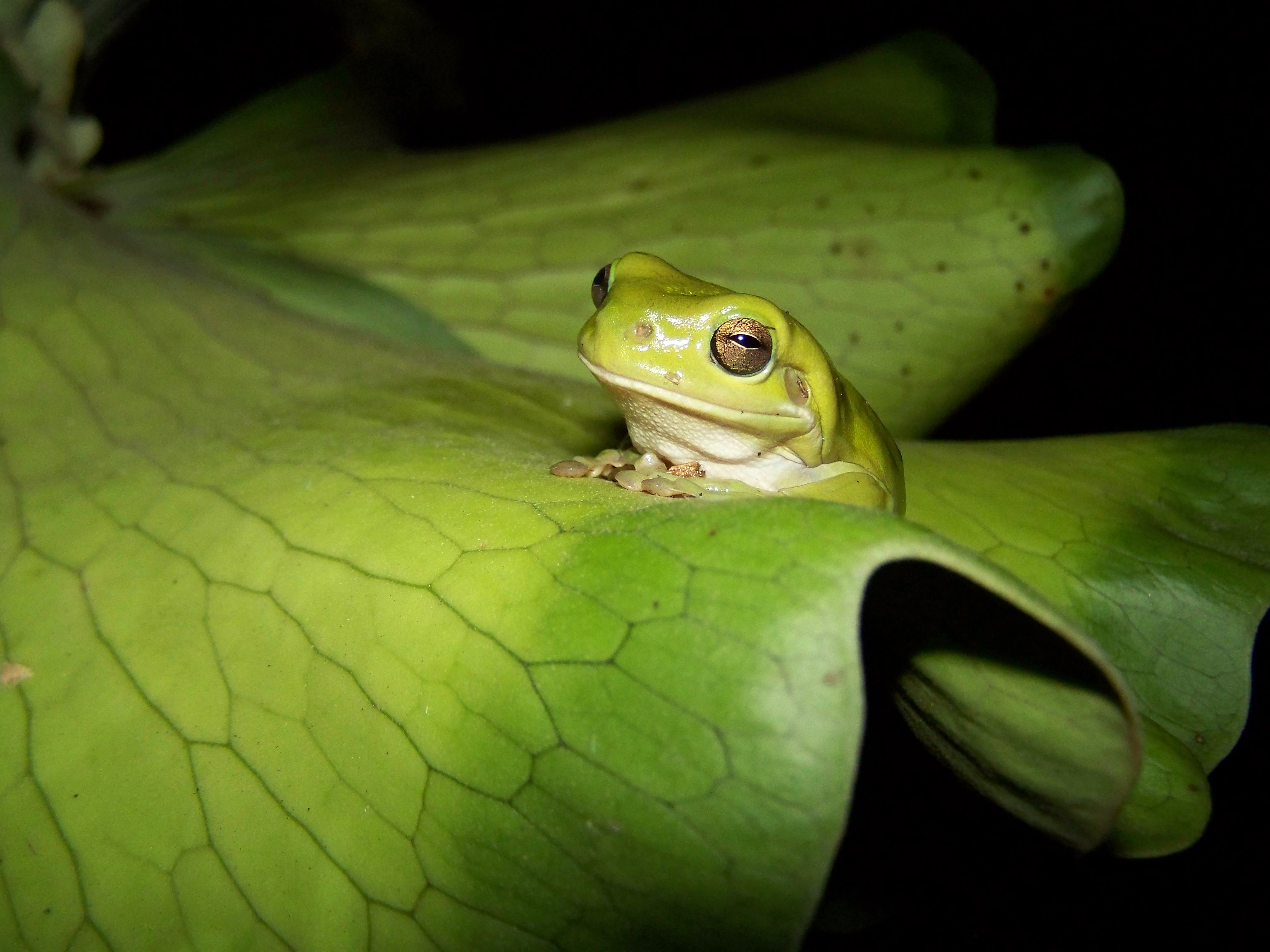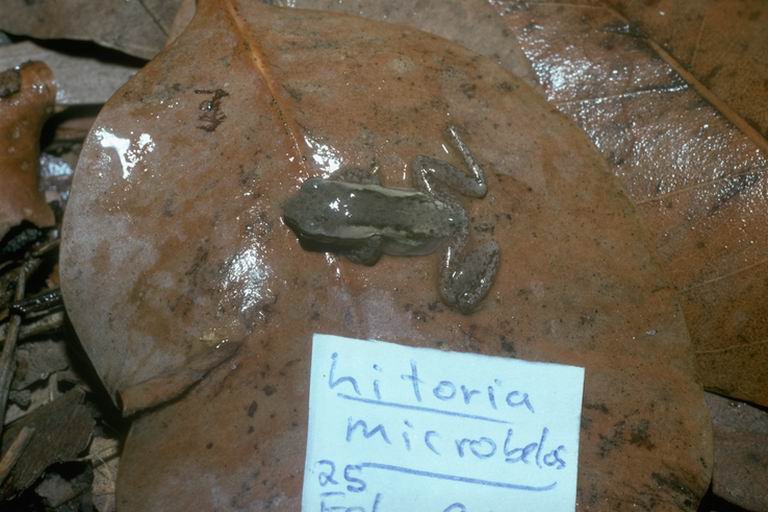|
Litoria
''Litoria'' is a genus of Hylidae, hylid tree frogs, sometimes collectively referred to as Australasian treefrogs. Description The species within the genus ''Litoria'' are extremely variable in appearance, behaviour, and habitat. The smallest species is the javelin frog (''L. microbelos''), reaching a maximum snout–to–Cloaca, vent length of , while the largest, the giant tree frog (''L. infrafrenata''), reaches a size of . They are distinguishable from other tree frogs by the presence of horizontal irises, no pigmentation of the eyelids, and their distribution east and south from Wallacea. Over one hundred species are recognised and new species are still being added, such as the Pinocchio frog discovered in 2008 and described in 2019. Distribution and habitat The frogs are native to Australia, the Bismarck Archipelago, the Solomon Islands, New Guinea, the Lesser Sunda Islands, and the Moluccan Islands. The appearance, behaviour and habitat of each species are usually linked ... [...More Info...] [...Related Items...] OR: [Wikipedia] [Google] [Baidu] |
Litoria Magna
''Litoria'' is a genus of hylid tree frogs, sometimes collectively referred to as Australasian treefrogs. Description The species within the genus ''Litoria'' are extremely variable in appearance, behaviour, and habitat. The smallest species is the javelin frog (''L. microbelos''), reaching a maximum snout–to–vent length of , while the largest, the giant tree frog (''L. infrafrenata''), reaches a size of . They are distinguishable from other tree frogs by the presence of horizontal irises, no pigmentation of the eyelids, and their distribution east and south from Wallacea. Over one hundred species are recognised and new species are still being added, such as the Pinocchio frog discovered in 2008 and described in 2019. Distribution and habitat The frogs are native to Australia, the Bismarck Archipelago, the Solomon Islands, New Guinea, the Lesser Sunda Islands, and the Moluccan Islands. The appearance, behaviour and habitat of each species are usually linked. The small, ... [...More Info...] [...Related Items...] OR: [Wikipedia] [Google] [Baidu] |
Litoria Caerulea
The Australian green tree frog (''Ranoidea caerulea''/''Litoria caerulea''), also known as simply green tree frog in Australia, White's tree frog, or dumpy tree frog, is a species of tree frog native to Australia and New Guinea, with introduced populations in the United States and New Zealand, though the latter is believed to have died out. It is morphologically similar to some other members of its genus, particularly the magnificent tree frog (''R. splendida'') and the white-lipped tree frog (''R. infrafrenata''). Larger than most Australian frogs, the Australian green tree frog reaches 10 cm (4 in) or more in length. Its average lifespan in captivity, about 16 years, is long compared with most frogs. Docile and well suited to living near human dwellings, Australian green tree frogs are often found on window sills or inside houses, eating insects drawn by the light. The green tree frog screams when it is in danger to scare off its foe, and squeaks when ... [...More Info...] [...Related Items...] OR: [Wikipedia] [Google] [Baidu] |
Pinocchio Frog
The Pinocchio frog or northern Pinocchio treefrog (''Litoria pinocchio'') is a species of frog in the subfamily Pelodryadinae. It was discovered in the Foja Mountains of Papua Province in Indonesia by Conservation International and the National Geographic Society during a 2008 expedition, where it was accidentally spotted by Paul Oliver, a herpetologist. Despite being discovered in 2008, it remained undescribed and was long known simply as the "Pinocchio frog" (with no given scientific name) until 2019, when it was finally described as ''Litoria pinocchio''. The frog is named for its Pinocchio Pinocchio ( , ) is a fictional character and the protagonist of the children's novel, ''The Adventures of Pinocchio'' (1883) by Italian writer Carlo Collodi of Florence, Tuscany. Pinocchio was carved by a poor man named Geppetto in a Tuscan vil ...-like nose, which can enlarge and inflate in certain situations. Although unusual, a similar nose is found in several other related frogs fr ... [...More Info...] [...Related Items...] OR: [Wikipedia] [Google] [Baidu] |
Javelin Frog
The javelin frog (''Litoria microbelos'') is a species of frog in the subfamily Pelodryadinae, that is endemic to Australia. Its natural habitat In ecology, habitat refers to the array of resources, biotic factors that are present in an area, such as to support the survival and reproduction of a particular species. A species' habitat can be seen as the physical manifestation of its ...s are subtropical or tropical dry lowland grassland, swamps, and intermittent freshwater marshes. Description The javelin frog is the smallest known tree frog in Australia, with males reaching and females in length. Colours are typically brown with a light-brown dorsal surface, dark-brown lateral stripes and light, almost white, ventral surface. A white stripe runs along the lip and along the side of the frog. References Litoria Amphibians of Western Australia Amphibians of the Northern Territory Amphibians of Queensland Taxonomy articles created by Polbot Amphibians descr ... [...More Info...] [...Related Items...] OR: [Wikipedia] [Google] [Baidu] |
Hylidae
Hylidae is a wide-ranging family of frogs commonly referred to as " tree frogs and their allies". However, the hylids include a diversity of frog species, many of which do not live in trees, but are terrestrial or semiaquatic. Taxonomy and systematics The earliest known fossils that can be assigned to this family are from the Cretaceous of India and the state of Wyoming in the United States. The common name of "tree frog" is a popular name for several species of the family Hylidae. However, the name "treefrog" is not unique to this family, also being used for many species in the family Rhacophoridae. The following genera are recognised in the family Hylidae: * Subfamily Hylinae ** Tribe Cophomantini *** '' Aplastodiscus'' – canebrake treefrogs *** '' Boana'' – gladiator treefrogs *** '' Bokermannohyla'' *** '' Hyloscirtus'' *** '' Myersiohyla'' *** '' Nesorohyla'' *** '' "Hyla" nicefori'' ** Tribe Dendropsophini ***'' Dendropsophus'' *** ''Xenohyla ** Tribe Hy ... [...More Info...] [...Related Items...] OR: [Wikipedia] [Google] [Baidu] |
Giant Tree Frog
The white-lipped tree frog (''Nyctimystes infrafrenatus'') is a species of frog in the subfamily Pelodryadinae. It is the world's largest tree frog (the Cuban tree frog reaches a similar maximum size) and is found in Australia. Other common names include the New Guinea treefrog, giant tree frog, and Australian giant treefrog. Description The white-lipped tree frog reaches in length. Females are larger than males, and have thicker skin in correlation with the difference in body size. Its dorsal surface is usually bright green, although the colour changes depending on the temperature and background, and can be brown. The ventral surface is off-white. The lower lip has a distinctive white stripe (giving this species its name), which continues to the shoulder. The white stripes on the trailing edges of the lower leg may turn pink in the breeding male. The white-lipped tree frog has large toe pads, which aid it to climb. The toes are completely webbed, and the hands are partially ... [...More Info...] [...Related Items...] OR: [Wikipedia] [Google] [Baidu] |
Bleating Tree Frog
The bleating tree frog of Australia has been split into three distinct species: * Screaming tree frog (''Litoria quiritatus''), from northeastern Victoria to mid-coast New South Wales * Robust bleating tree frog (''Litoria dentata sensu stricto''), from northeastern New South Wales to the NSW/Queensland border * Slender bleating tree frog (''Litoria balatus'') from southeastern Queensland {{Animal common name Animals by common name Amphibian common names Frogs ... [...More Info...] [...Related Items...] OR: [Wikipedia] [Google] [Baidu] |
Riversleigh Fauna
Riversleigh fauna is the collective term for any species of animal identified in fossil sites located in the Riversleigh World Heritage Area. Faunal zones The presence of the Riversleigh in the Oligo-Miocene has been exceptionally well preserved throughout a number of time periods. These has been classified by four "faunal zones", and may be summarised as, * Faunal Zone A (FZA): late Oligocene, a period 23.03–28.4 million years before present * Faunal Zone B (FZB): early Miocene, 15.97-23.03 myr * Faunal Zone C (FZC): middle Miocene, 11.608-15.97 myr * Faunal Zone D (FZD): late Miocene, 5.332-11.608 myr More recent fossil specimens has also been coded to the period of deposition, * Pliocene (PLIO), a period 2.588-5.332 myr * Pleistocene (PLEIS), 0.0117-2.588 myr * Holocene, noted as (HOLO) to indicate the period dated as following the Pleistocene, from the present day to 11,700 years ago. Faunal lists The following are incomplete lists of mammals, birds, fish, and inverte ... [...More Info...] [...Related Items...] OR: [Wikipedia] [Google] [Baidu] |
Late Oligocene
The Chattian is, in the geologic timescale The geologic time scale or geological time scale (GTS) is a representation of time based on the rock record of Earth. It is a system of chronological dating that uses chronostratigraphy (the process of relating strata to time) and geochron ..., the younger of two age (geology), ages or upper of two stage (stratigraphy), stages of the Oligocene epoch (geology), Epoch/Series (stratigraphy), Series. It spans the time between . The Chattian is preceded by the Rupelian and is followed by the Aquitanian (stage), Aquitanian (the lowest stage of the Miocene). Stratigraphic definition The Chattian was introduced by Austrian palaeontologist Theodor Fuchs in 1894. Fuchs named the stage after the Chatti, a Germanic peoples, Germanic tribe.Berry, Edward W"The Mayence Basin, a Chapter of Geologic History" ''The Scientific Monthly'', Vol. 16, No. 2, February 1923. pp. 114. Retrieved March 18, 2020. The original type locality (geology), type l ... [...More Info...] [...Related Items...] OR: [Wikipedia] [Google] [Baidu] |
Etadunna Formation
Etadunna may refer to: * Etadunna, South Australia, the gazetted locality named for the station * Etadunna Airstrip, an airfield in South Australia * Etadunna Formation, a geological formation found in Queensland - refer Baru ''Baru'', sometimes referred to as the cleaver-headed crocodile, is an extinct genus of Australian mekosuchine crocodilian. Its fossils have been found from various Late Oligocene and Miocene localities from across the Northern Territory and Que ... * Etadunna Station, a pastoral lease in northeastern South Australia {{disambiguation ... [...More Info...] [...Related Items...] OR: [Wikipedia] [Google] [Baidu] |

